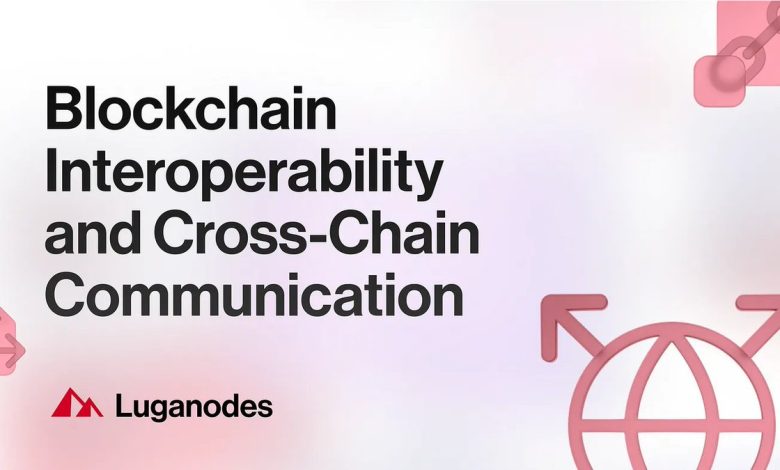The Future of Cross-Chain Communication in Blockchain

- Understanding the Importance of Cross-Chain Communication
- Challenges and Solutions in Achieving Seamless Interoperability
- Exploring the Potential Impact of Cross-Chain Communication on Blockchain Technology
- The Role of Decentralized Exchanges in Facilitating Cross-Chain Transactions
- Interoperability Standards: A Key Factor in the Future of Blockchain
- Case Studies: Successful Implementations of Cross-Chain Communication in the Blockchain Industry
Understanding the Importance of Cross-Chain Communication
Cross-chain communication is a crucial aspect of blockchain technology that allows different blockchains to interact and share information with each other. This interoperability is essential for the future development of blockchain networks, as it enables seamless transactions and data transfer between disparate chains.
Understanding the importance of cross-chain communication is vital for realizing the full potential of blockchain technology. By enabling different blockchains to communicate with each other, we can create a more interconnected and efficient ecosystem that can support a wide range of decentralized applications and use cases.
Without cross-chain communication, blockchain networks would operate in isolation, limiting their capabilities and hindering their growth. By facilitating communication between different chains, we can unlock new possibilities for innovation and collaboration in the blockchain space.
Overall, cross-chain communication is a key enabler of the future of blockchain technology, allowing for greater scalability, interoperability, and flexibility in how we use and interact with decentralized systems. As the blockchain ecosystem continues to evolve, the ability to communicate across chains will become increasingly important for driving innovation and expanding the reach of this transformative technology.
Challenges and Solutions in Achieving Seamless Interoperability
One of the main challenges in achieving seamless interoperability in blockchain technology is the lack of standardized protocols across different chains. This can lead to difficulties in communication and data transfer between various blockchains, hindering the overall efficiency of cross-chain operations. To address this issue, developers are working on creating universal standards that can be adopted by all blockchain networks, ensuring smooth interoperability.
Another obstacle to seamless cross-chain communication is the issue of scalability. As blockchain networks continue to grow in size and complexity, the volume of transactions being processed also increases. This can put a strain on the network, causing delays and congestion that impact interoperability. To overcome this challenge, solutions such as sharding and layer 2 scaling are being implemented to improve the scalability of blockchain networks and enhance cross-chain communication.
Security is a critical concern when it comes to interoperability between different blockchains. The decentralized nature of blockchain technology means that each network has its own security protocols and mechanisms in place. When connecting multiple chains for cross-chain communication, there is a risk of vulnerabilities and potential security breaches. To mitigate this risk, developers are focusing on enhancing security measures such as encryption, multi-signature authentication, and smart contract audits to ensure the safe transfer of assets and data between blockchains.
Exploring the Potential Impact of Cross-Chain Communication on Blockchain Technology
Exploring the potential impact of cross-chain communication on blockchain technology opens up a world of possibilities for the future of decentralized systems. By enabling different blockchains to communicate and share information seamlessly, cross-chain communication can enhance interoperability, scalability, and security in the blockchain ecosystem.
One of the key benefits of cross-chain communication is the ability to facilitate asset transfers between different blockchains. This can streamline processes, reduce costs, and increase efficiency in transactions. Additionally, cross-chain communication can enable the development of decentralized applications (dApps) that operate across multiple blockchains, creating new opportunities for innovation and collaboration.
Furthermore, cross-chain communication can help address the issue of blockchain scalability by allowing different blockchains to work together to process a higher volume of transactions. This can improve the overall performance of the blockchain network and enhance user experience. Additionally, by enabling secure communication between blockchains, cross-chain technology can enhance the security and integrity of the entire blockchain ecosystem.
In conclusion, the potential impact of cross-chain communication on blockchain technology is significant. By promoting interoperability, scalability, and security, cross-chain communication can pave the way for a more efficient and interconnected blockchain ecosystem. As the technology continues to evolve, we can expect to see new use cases and applications emerge, further driving the adoption and growth of blockchain technology.
The Role of Decentralized Exchanges in Facilitating Cross-Chain Transactions
Decentralized exchanges play a crucial role in enabling seamless cross-chain transactions within the blockchain ecosystem. These exchanges operate without a central authority, allowing users to trade directly with one another across different blockchains. By leveraging smart contracts and atomic swaps, decentralized exchanges facilitate trustless transactions between parties, eliminating the need for intermediaries.
One of the key advantages of decentralized exchanges is their ability to support interoperability between various blockchains. This interoperability enables users to exchange assets across different chains, opening up new possibilities for decentralized finance (DeFi) applications and cross-chain communication. By providing a decentralized platform for trading, these exchanges promote a more inclusive and interconnected blockchain ecosystem.
Furthermore, decentralized exchanges enhance security and privacy for users by reducing the risk of hacks and data breaches associated with centralized exchanges. With no single point of failure, decentralized exchanges offer a more resilient and censorship-resistant trading environment. This increased security and privacy make decentralized exchanges an attractive option for users looking to maintain control over their assets and data.
Interoperability Standards: A Key Factor in the Future of Blockchain
Interoperability standards play a crucial role in shaping the future of blockchain technology. These standards define how different blockchains can communicate and interact with each other seamlessly. As the blockchain ecosystem continues to grow and evolve, the need for cross-chain communication becomes increasingly important.
By establishing interoperability standards, blockchain networks can overcome the challenges of siloed data and isolated transactions. This enables the seamless transfer of assets and information across different blockchains, opening up new possibilities for decentralized applications and services.
One key factor in achieving effective cross-chain communication is the development of common protocols and standards that are widely adopted across the industry. These standards ensure that different blockchains can understand and interpret data in a consistent manner, facilitating smooth interoperability between disparate networks.
Furthermore, interoperability standards help to enhance the overall security and scalability of blockchain networks. By enabling seamless communication between different chains, these standards reduce the risk of data breaches and improve the efficiency of transactions. This paves the way for a more interconnected and efficient blockchain ecosystem.
Case Studies: Successful Implementations of Cross-Chain Communication in the Blockchain Industry
Several successful implementations of cross-chain communication in the blockchain industry have demonstrated the potential for seamless interoperability between different blockchain networks. These case studies showcase the real-world applications of cross-chain communication and highlight the benefits it can bring to the blockchain ecosystem.
- Polkadot: Polkadot is a prime example of a blockchain platform that has successfully implemented cross-chain communication. By using its innovative relay chain architecture, Polkadot enables different blockchains to connect and share information securely. This interoperability has opened up new possibilities for developers and users, allowing them to leverage the unique features of multiple blockchains simultaneously.
- Cosmos: Cosmos is another notable project that has achieved significant success in cross-chain communication. Through its Inter-Blockchain Communication (IBC) protocol, Cosmos enables different blockchains to communicate and transact with each other. This has created a vibrant ecosystem of interconnected blockchains, fostering collaboration and innovation across the industry.
- Wanchain: Wanchain is a blockchain platform that focuses on enabling cross-chain transactions and communication. By using its proprietary cross-chain infrastructure, Wanchain allows users to transfer assets across different blockchains seamlessly. This has streamlined the process of exchanging assets and has made it easier for users to access a wide range of blockchain networks.
These case studies demonstrate the growing importance of cross-chain communication in the blockchain industry. As more projects explore the potential of interoperability, we can expect to see even greater innovation and collaboration in the future. By breaking down the barriers between different blockchains, cross-chain communication is paving the way for a more connected and efficient blockchain ecosystem.



